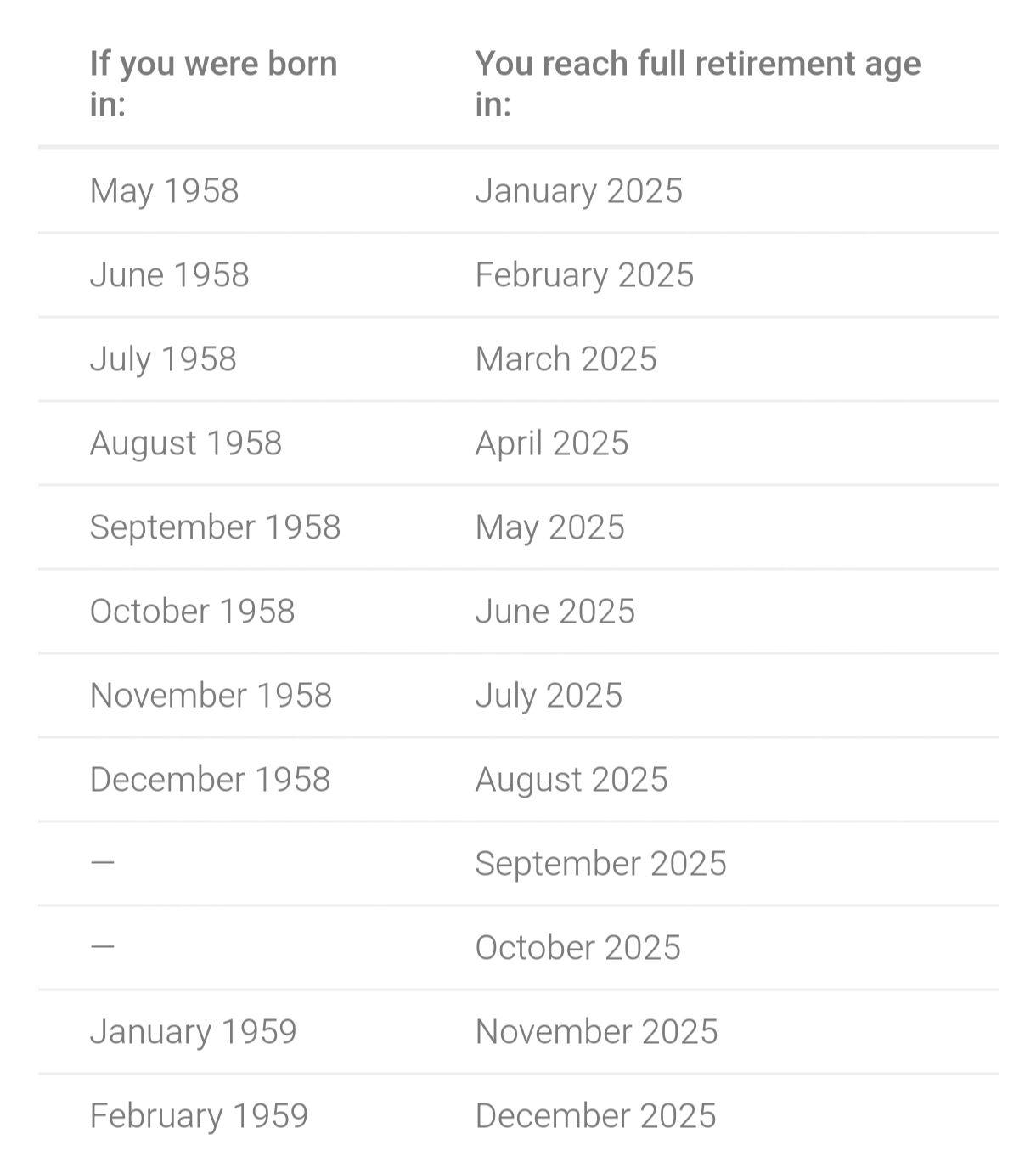Shocking: Americans Who Can Retire in 2025 After the Big Retirement Age Shake-Up
One of the crucial career milestone decisions that every employee must make is when to retire. Making the appropriate decision for you at this milestone is crucial because it will influence the Social Security benefit they get until they pass away.
Employees reach full retirement age every year, at which point they evaluate their alternatives, career, and life and determine whether to retire or work for a few more years.
This article may not be necessary for people who are already receiving benefits because some people may have completed this process years earlier and be retired by the time they reach full retirement age.

Collecting Social Security in 2025 at full retirement age
Upon reaching full retirement age in 2025, receiving Social Security benefits Even though we discussed full retirement age in the introduction, there are other ages at which an employee is eligible to receive retirement benefits.
Those born in 1963 can start receiving benefits this year because the earliest age at which a worker can do so is 62. However, there is a significant disadvantage to an early claim: compensation would be permanently lowered by 30% compared to their full retirement age.
As an example of what that may entail for an employee, the Social Security Administration states that “your maximum benefit would be $3,822 if you retire at full retirement age in 2024.”
But in 2024, your maximum compensation would be $2,710 if you retired at age 62. The distinction is quite obvious, and while there are numerous reasons why an employee might choose to increase their retirement age and start receiving benefits sooner rather than later, if you are not one of those individuals, understanding when to make a claim will be helpful.
These days, the term “full retirement age” is a little deceptive because there is no single age at which a worker will suddenly qualify for full retirement benefits or 100% of their primary insurance amount (PIA).
This is due to the fact that since 1984, when the Social Security program initially failed, the full retirement age has been rising rapidly.
One of the steps they proposed to prevent future failures was raising full retirement, but because the hike was so slow, it hasn’t been fully implemented yet.
The goal of the hike was to raise the full retirement age for people born in 1960 or later from the original 65 set in 1935 to 67 years old. The table below will be useful for people who wish to determine the precise date at which they will achieve full retirement age.



Comments are closed, but trackbacks and pingbacks are open.